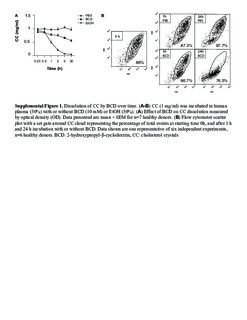Cyclodextrin Reduces Cholesterol Crystal-Induced Inflammation by Modulating Complement Activation
Bakke, Siril Skaret; Aune, Marie Hjelmseth; Niyonzima, Nathalie; Pilely, Katrine; Ryan, Liv; Skjelland, Mona; Garred, Peter; Aukrust, Pål; Halvorsen, Bente; Latz, Eicke; Damås, Jan Kristian; Mollnes, Tom Eirik; Espevik, Terje
Journal article
Submitted version

Permanent lenke
http://hdl.handle.net/11250/2496064Utgivelsesdato
2017Metadata
Vis full innførselSamlinger
Sammendrag
Cholesterol crystals (CC) are abundant in atherosclerotic plaques and promote inflammatory responses via the complement system and inflammasome activation. Cyclic oligosaccharide 2-hydroxypropyl-β-cyclodextrin (BCD) is a compound that solubilizes lipophilic substances. Recently we have shown that BCD has an anti-inflammatory effect on CC via suppression of the inflammasome and liver X receptor activation. The putative effects of BCD on CC-induced complement activation remain unknown. In this study, we found that BCD bound to CC and reduced deposition of Igs, pattern recognition molecules, and complement factors on CC in human plasma. Furthermore, BCD decreased complement activation as measured by terminal complement complex and lowered the expression of complement receptors on monocytes in whole blood in response to CC exposure. In line with this, BCD also reduced reactive oxygen species formation caused by CC in whole blood. Furthermore, BCD attenuated the CC-induced proinflammatory cytokine responses (e.g., IL-1α, MIP-1α, TNF, IL-6, and IL-8) as well as regulated a range of CC-induced genes in human PBMC. BCD also regulated complement-related genes in human carotid plaques treated ex vivo. Formation of terminal complement complex on other complement-activating structures such as monosodium urate crystals and zymosan was not affected by BCD. These data demonstrate that BCD inhibits CC-induced inflammatory responses, which may be explained by BCD-mediated attenuation of complement activation. Thus, these findings support the potential for using BCD in treatment of atherosclerosis.